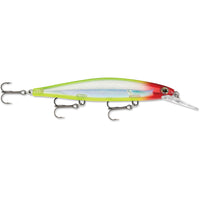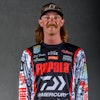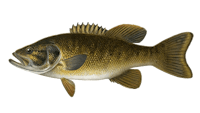Seth Feider's Top 9 Lures for Fall Smallmouth Bass Fishing
Published: Updated:
Seth Feider explains his top fall fishing lures to Wired2Fish
All Featured Products

Outkast Tackle Perfect Ned Head
$5.24 – $6.99
Jump to 1:31

Z-Man Hula StickZ
$5.49
Jump to 1:48

Rapala DT 8 Crankbait
$10.99
Jump to 2:28

Outkast Tackle Touchdown 2 Jig - EOL
$5.29
Jump to 2:37

Z-Man Turbo CrawZ 4"
$5.49
Jump to 2:45

Z-Man StreakZ 3.75" Jerkbait
$5.49
Jump to 3:06

Storm Largo Shad
$5.99
Jump to 4:56

Outkast Tackle Golden Eye Swimmer Head
$4.49 – $5.99
$5.99Jump to 5:08

Rapala Shadow Rap Deep Jerkbait
$12.99
Jump to 5:12

Deps Circuit Vib Blade Bait
$9.29 – $13.00
$13.00Jump to 5:48

VMC Neon Moon Eye Jig
$5.09 – $8.99
$6.29Jump to 6:32
Understanding the Fall Transition in Smallmouth Fishing
In this insightful video, professional angler Seth Feider delves into the nuances of fall fishing, focusing on bait selection as it relates to water temperature. Seth emphasizes the unique behaviors of smallmouth bass in natural lakes, particularly in the northern United States.
Baits for Late Summer to Early Fall (Water Temperature: ~70 Degrees)
As the water temperature approaches 70 degrees, Seth recommends the ned rig, especially for fishing in deeper waters ranging from 20 to 25 feet. He explains how smallmouth bass become finicky during this period, making the ned rig an ideal choice.
Transitioning Baits as Fall Progresses (Water Temperature: 60-65 Degrees)
When the temperature drops to between 60 and 65 degrees, Seth shifts to crankbaits and football jigs, noting their effectiveness in enticing smallmouth bass that prefer chasing prey. He also mentions the versatility of the jig, which remains effective in colder waters.
Peak Fall Fishing Strategies (Water Temperature: 55 Degrees)
At an ideal water temperature of around 55 degrees, Seth advocates for the Alabama rig. He observes a significant increase in smallmouth activity in this range, particularly in 15 to 20-foot depths.
Late Fall Techniques (Water Temperature: 48-50 Degrees)
As the water cools further, Seth finds success with single swimmers and jerkbaits, especially with longer pauses. He shares that his two biggest smallmouth catches were made with single swimmers in this temperature range.
Approaching Winter (Water Temperature: Mid-40s to High 30s)
In colder conditions (mid-40s to high 30s), Seth focuses on blade baits and damiki rigs. He notes the challenges of fishing in these temperatures but assures that smallmouth can still be effectively targeted.
| Water Temperature | Recommended Baits |
|---|---|
| ~70 Degrees | Ned Rig |
| 60-65 Degrees | Crankbaits, Football Jigs |
| 55 Degrees | Alabama Rig |
| 48-50 Degrees | Single Swimmers, Jerkbaits |
| Mid-40s to High 30s | Blade Baits, Damiki Rigs |
Full Video Transcript
Okay. What's up guys? Seth Feider here and I'm going to talk you through the fall transition and break down baits by water temperature. This is going to be mostly based around natural lakes, northern part of the country, where smallmouth live. Some will play into that Tennessee stuff as well, but I've spent a lot of falls chasing smallies on natural lakes and there's definitely windows. Certain temperatures where certain baits work better, it's been pretty tried and true. We'll start end of summer, late August, as soon as you start getting some cool nights, you're kind of tail end of summer. Water's creeping down towards 70 degrees. In my opinion, a net rig is super hard to beat at that time. The fish really haven't made the... it's really not fall yet, you know what I mean? We've just got a first few couple cold nights. It's really late summer. The fish are kind of beat up. They'll go some of the deepest stuff they'll sit on all year at that end of August. A lot of like, you know, that's the time of year where, at least on our natural lakes, I'm catching fish out of, you know, 20 to 25 feet of water. And net rigs, they're pretty finicky that time of year. They're not super aggressive. My fish mind is a little heavier. This is a 3.16, it's a quarter, something like that. I like that little hula stick, just a super good crawdad imitator. And I have a lot of good luck with that bait from, you know, the low 70s into the high 60s. And I'd say really 65 is kind of when we start seeing stuff changing. As far as temperature wise, fish are starting to make moves, you know, this is kind of the end of summer. Really, more than anything. So that's about 70 degrees right there. And I'd say when we hit that 65 degree water, that's when I consider fall really coming on in our part of the country. And that's when cranking is going to become a big deal. That crankbait bite's really good, 60 to 65. They like chasing stuff. A football jig gets really good for me as well too. Anywhere there's a lot of crawfish, drag that around hardhead, same deal. Around that 60, 65 degree temperature. And the jig, a jig's a special bait because that's when you're going to be able to catch them on until the bitter end. Dragging something slow on the bottom will always get bit by smallies, no matter if the water's in the 30s. But that jig, that's a good big fish bait too, same with the crankbait. As far as my finesse stuff goes, I switch from the net to the drop shot when we hit 65. I don't know why, but I do a lot better drop shotting in that 55 to 65 over the net. I don't know exactly why I do better on that earlier, but I'd say 65 to 55, that's primo drop shotting for me. A vertical, you know, you're marking fish on your graph, dropping to them and whatnot. We've gone through the 60s, now we're going to get into the 50s. In my head, the best water temperature to fish in the fall is going to be about 55 degrees. That's when this dude comes out, the Alabama rig. Like 57 to 52, if the wind's blowing, that's the only thing I'm going to throw. When it gets slick, they'll get off this bait a little bit. 52 to 57, and I don't know why this is, I know a lot of guys down south catch them all winter long on an Alabama rig in really cold water. But like I said, in the 50s is when Alabama rig shines the best for me. That's my favorite time to smallmouth fish all year, around 55 degrees. I actually tend to see them start to move up a little bit out of that mid-summer, we were in that mid-20s, 20 foot of water. I'll see a lot of fish, and each lake's going to be different, it's all relative. I'm basing a lot of this off of Mille Lacs. Lakes that are a bit deeper, those numbers might be skewed a bit, lakes that are a bit shallower, they might be skewed a bit. It seems like I do really good once the water starts dropping more in that 15 to 20 foot range, I think they slide up a little bit. That's when all this stuff's going to work really well. And then as we get lower into the 50s, for some reason I quit catching them on an A-rig around 50, 52 degrees. And believe it or not, I'll actually do a lot better on just a single swimbait all by itself. The two biggest smallmouths I've ever caught have been on a single swimmer in that 48 to 50 degree water, just crawling it on the bottom super slow. That becomes the number one bait for me, that's jerkbait time too. This is that time of year where you're going to start putting long pauses in your jerkbait. I do real well mid-50s to mid-40s on a jerkbait. And then the tricky time of year is when you get into, for me anyways, is mid-40s and down. That single swimmer will still play a little bit, the rest of this stuff's pretty much off the table for me. When we get into the mid-40s it's going to be single swimmer, football jig will still catch them, and then that's when, for me, that's when a blade bait shines the best. In that 48 to 42 degree water, those are the best blade bait days I've had. I don't know what it is, but it falls a lot faster than most of the stuff. I think it's kind of a reaction bite, a little bit of vibration, real tight to the bottom. These fish, when it gets cold like that, you don't have a lot of fish really suspended anymore. They're really going to lock down tight, they're really getting basically about to where they're going to live their winter. When you start getting into that blade bait fishing, that's probably where they're going to be underneath the ice, if not too far from it. And then another thing I didn't have out here, a dameke rig. That's something for marking fish on the graph and dropping to them, either a blade bait or a dameke rig will start to play in that mid 40s down to high 30s. And then, I mean, it's about frozen at that point. High 30s, you can still get a few bites. When you get down into that water temperature, it doesn't seem like you ever have the super crazy days like you do in the mid 50s or right around 50 degrees. It gets challenging to catch bass when you get into the 30 degree realm, 36, 38. That's the bottomed out, that's as cold as it's going to get all year. You're basically fishing winter holes. Yeah, that's what I run mid, you know, end of summer all the way until ice up. You can definitely catch fish out of cold water, there's no doubt about that, especially smallmouths. It doesn't seem to bother them that much. When it does get, you know, mid 30s, it gets really hard to catch fish, but you can still catch them. And that's kind of my run now. Got him at run now. We'll be right back after this.


